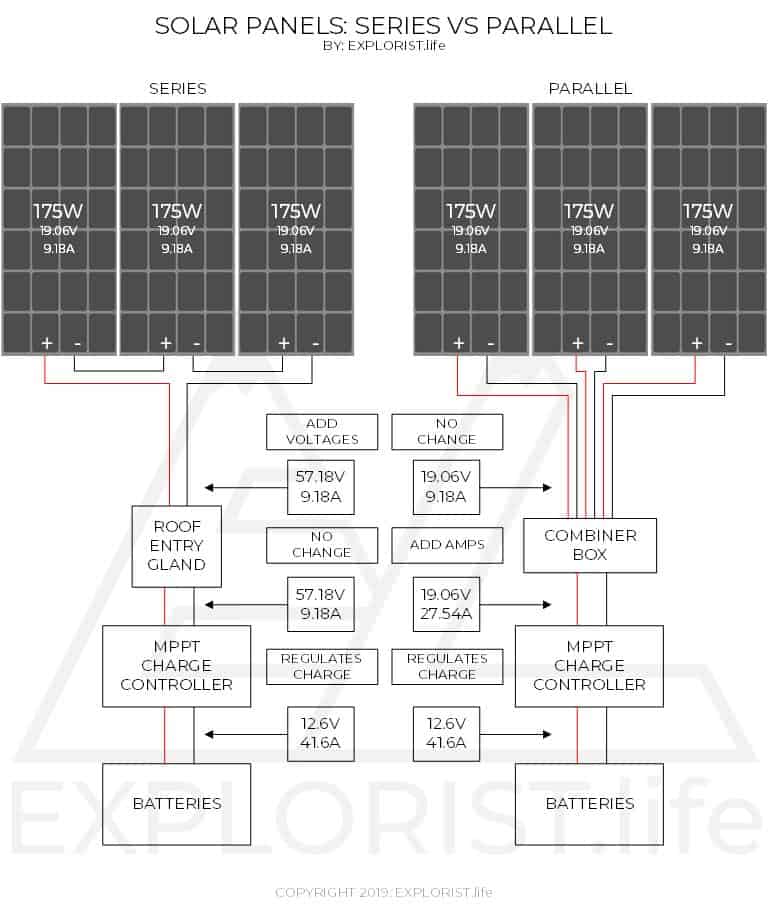As others have said shading greatly reduces output so does heat.
Solar panels output hogher voltage or amps.
1 the system voltage is often at least 24 volts and 2 the solar array output voltage is fed to an inverter or charge controller of a typically higher input voltage compared to off grid systems.
From my experience under normal conditions a solar panel will produce 75 of its rated power.
So a 175 watt panel will produce 131 watts.
When sunlight hits a solar panel voltage and current are produced.
Calculate the current in amps by dividing power in watts by the voltage in volts.
100 watts 17 5 volt vmp 5 7 amps imp short the panel and measure your isc in noon time sun use a 10 amp dmm or use a dc current clamp type meter.
Hopefully it is less than the solar panel controller output voltage.
Measure the solar panel controller output voltage try to get maximum voltage by angling the panels.
For example if the solar panel is rated at 175 watts and the maximum power voltage vmp is given as 23 6 volts.
Solar cells are roughly constant current devices at a given illumination so if you have an 18 volt panel at 1 amp when directly connected to a lead acid battery it will charge at 14 15 volts 1 amp.
Measure the battery voltage.
Solar panels usually produce between 250 and 400 watts of power.
The actual output you see depends on factors like shading orientation and sun hours.
Your a little further north so i would expect less.
If you use a 36 volt 1 amp panel it will charge the same battery at 14 15 volts 1 amp.
Such higher voltage means that series connection is more often applied in grid tied solar systemswhere.
The pmax is the sweet spot of the solar panel power output where the combination of the volts and amps results in the highest wattage volts x amps watts.
Connect the ve solar controller output lead to the ve battery terminal.
This work can be measured in watts and is equal to volts times amps watts volts x amps.
If the panel was producing 130 watts at 13 volts that would be 10 amps.
You can freely compare solar quotes on the energysage marketplace to see how different wattage panels will affect your unique system.
And running 50 feet one way run at 4 amps on 10 awg the voltage drop would be.
Basically the latter setup would be a waste.
This current pushed by voltage flows through wires in an electrical system to perform work when it encounters resistance which can be measured in terms of watts.

